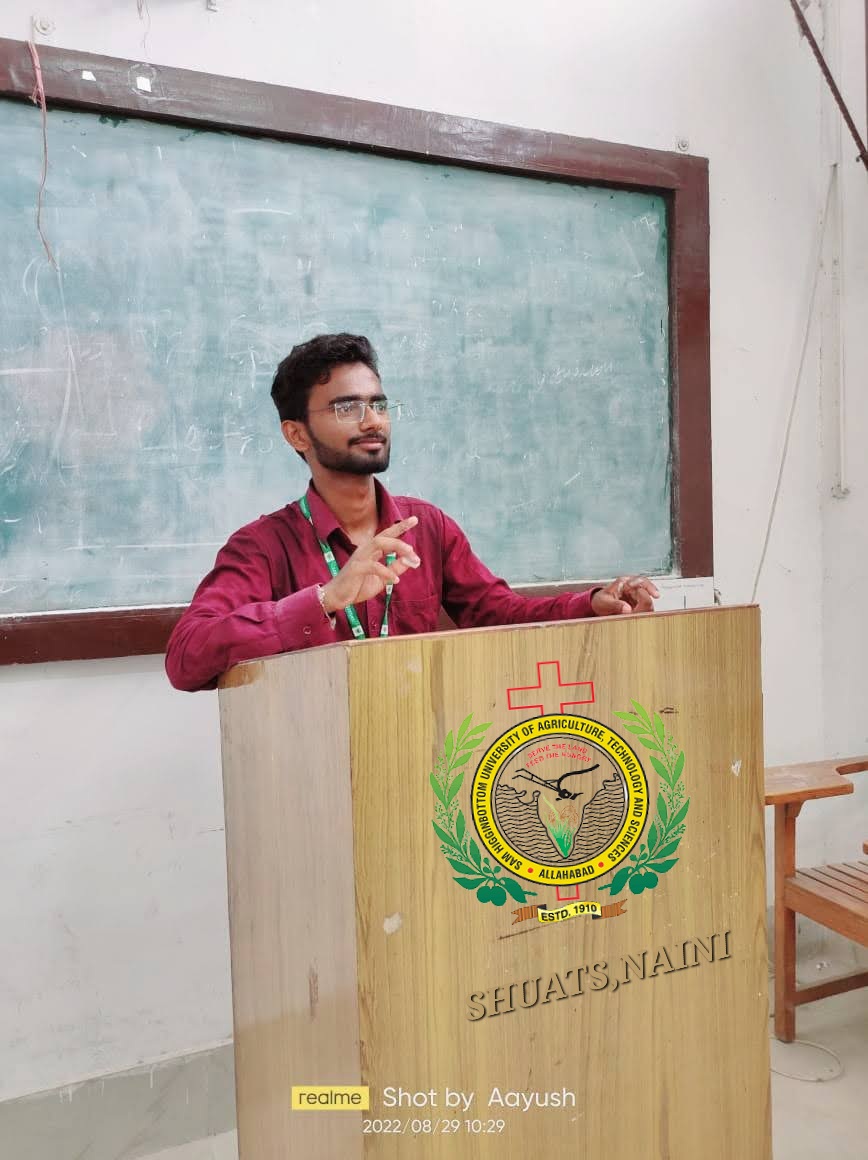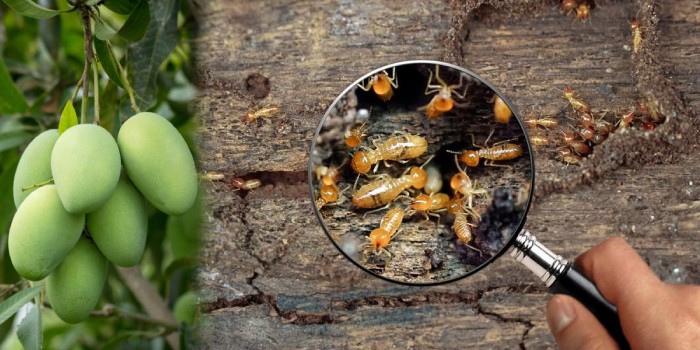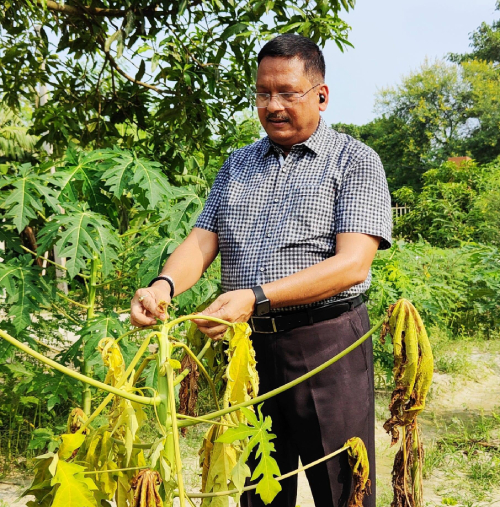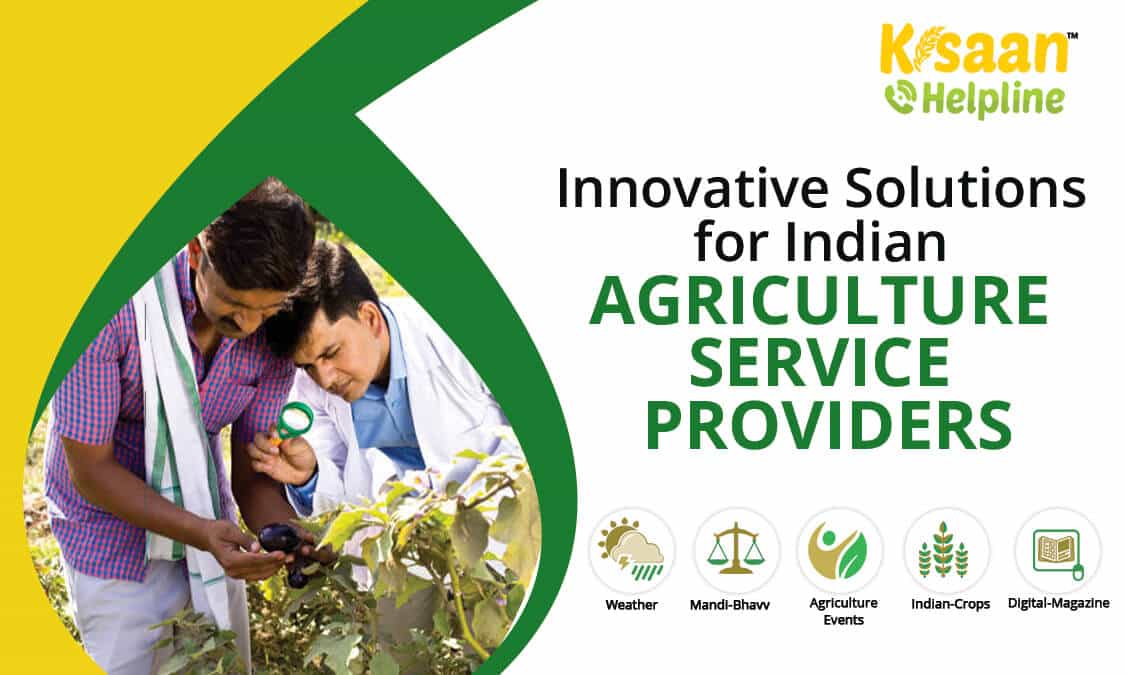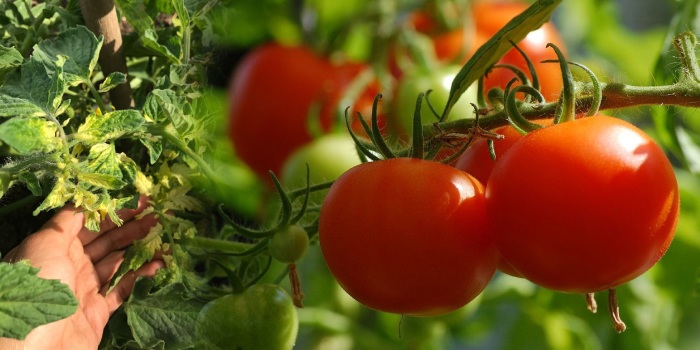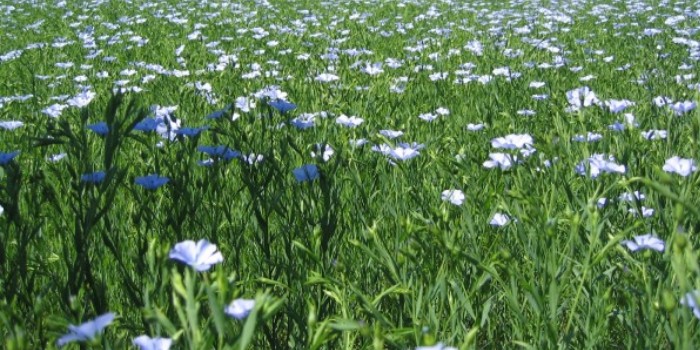
“Scientific Cultivation of Dual Purpose crop; - Linseed”
Guru Dayal - (Project Assistant – DBT Turmeric Project)*
Raghvendra Kumar Kushwaha- ( Research Scholar PG)**
Neelu - (Research Scholar PG)***
Ekanshu Pahade - (Research Scholar PG)****
*Department of Soil Science & Agricultural Chemistry,
Institute of Agricultural Sciences,
Bundelkhand University, Jhansi, U.P.
Corresponding author email – gurudayal20195@gmail.com
**M.Sc. (Agri.) Soil Science
Sam Higginbottom University of Agriculture,
Technology and Sciences Allahabad-211007,U.P.
Gmail- rkk18200@gmail.com
ABSTRACT
Flax is another name for the crop linseed. This crop is cultivated to serve two purpose namely, food and fiber. As this is also a oilseed crop so the major output from this crop is oil also and this oil is used for the commercial purpose. The textiles industry also seeks the raw material i.e. Flax obtained from this crop for the production of Linen which is used in making of bed sheets and table cloths. This writing includes the essential information regarding the cultivation of this crop. The better quality and high production can be easily achieved by following the scientific technology of cultivation. The whole production technology is explained ahead. The details of variety for serving the dual purpose are also mentioned ahead.
Key-words: Scientific cultivation, Flax, Linen, Multipurpose Varieties etc.
Introduction:-
Linseed is the second most important oilseed crop grown during rabi after rapeseed-mustard in terms of both production and area. It is the nation's leader in terms of technical oil production. There is lot of controversy regarding origin of linseed. As per Vavilov, cultivated annual linseed probably originated from India, Ethiopia or Iran. The possibility of it’s introduction into India from Asiatic center of origin has also not been ruled out. Polyphytic origin of Indian linseed seems to be more logical. During 2003, the area under linseed in the world was 2.46 million hectare with a production of 2.09 metric tonne and productivity of 0.851 ton per hectare. Tunisia has the highest productivity (2136 Kg/ha) among the major linseed producing countries, China has the highest productivity (1130 Kg/ha) followed by Argentina (885 Kg/ha) in India linseed is cultivated in an area of 235.77 thousand hectare with a production of 137.82 tones thousand according for a productivity of 585 Kg/ha (Source – Ministry of Sciences, New Delhi – 2016-17 to 2020-21). In India highest area and production of linseed in Madhya Pradesh (84 thousand/hectare) and (51.19 tones). Highest productivity of linseed in India at Andhra Pradesh 1480 kg/ha (Source – Ministry of Agriculture Sciences, New Delhi – 2016-17 to 2020-21). India ranks first in terms of area under linseed and third in world production.
Importance of Linseed:-
1. Medicinal Importance –
Linseed oil, fibers and flax lignans have potential health benefits such as in reduction of cardio vascular disease, atherosclerosis, diabetes, cancer, arthritis, Osteoporosis, autoimmune and neurological disorders. Linseed protein helps in the prevention and treatment of heart disease and in supporting the immune system.
2. Economic Importance –
Linseed oil is used in the manufacture of points and varnishes and oil cloth and lanolin. Its oilcake is used both as cattle feed and as manure. A good quality fiber used in the manufacture of canvas, cloth and water resistant pipes can be extracted from the straw.
Climate :-
Linseed is a cool season crop and adapted to the same climate as that of wheat crop. The seed crop needs about 250 – 300 C during germination & Vegetative phase and 150 – 200 during seed formation. Linseed is generally grown where annual precipitation ranges from 500 to 800 mm. A well distributed rainfall of 450 to 500 mm is adequate for optimum yield.
Land Preparation:-
It can be cultivated successfully in matiyar and smooth loamy land. After harvesting the Kharif crop one plowing should be done with soil turning plough after that the field should be leveled properly by doing two plowing with cultivator or local plough.
Improved Variety:-
A. Multipurpose Variety -
Garima – It is a high yielding variety of linseed, which grows 125 – 130 days that yield received 20 – 25 q/ha. It is resistant/ tolerant variety for Gerui/rust.
Sweta - its duration period is 130-135 days.
B. Some important varieties are follows.
Subha – Powdery mildew inhibiter recommended for Bundelkhand plain area.
Padhmini - Powdery mildew inhibiter recommended for Bundelkhand plain area.
Sharda – Alternaria blight & rust inhibiter
RLC – 153 – Alternaria blight & rust inhibiter
Rajni - Alternaria blight & rust inhibiter
LCK (1009), JL595, LK – 1101, LCC – 1108, Uttera Linseed, Rajan and LLK – 1009
C. Dual Purpose Variety.
Parvati – For Bundelkhand region. (Rust & Mildew Resistant)
Ruchi – All Uttar Pradesh. (Rust & Mildew Resistant)
Shikha –
Rashmi-
Sowing Time :- Last week of October to November first week.
Seed Rate:- Multipurpose varieties required seed is 30 Kg/ha & Dual purpose varieties.
Seed Treatment:-
In the linseed crop, the infection of blight & wilting etc is initially done in seed or land, which the seed should be sown after treating it with 2.5 gram of thiram or 2 gram of carbendazim per Kg of seed.
Method of Sowing:- Sowing method of linseed is broadcast or by drilling in rows at row spacing is 25 cm.
Manure & Fertilizers:-
Well decomposed FYM applied @ 20 to 25 tones/ha before the sowing of crop. For Non irrigated areas, use nitrogen @ 50Kg/ha, Phosphorous@ 40kg/ha and Potash @ 40Kg/ha and in irrigated areas, nitrogen@ 100 Kg/ha, Phosphorus@ 60Kg/ha, Potash @ 40 Kg/ha. In non-irrigated condition, full amount of nitrogen and phosphorus and potash and irrigated condition half amount of nitrogen & full amount of phosphorus should be applied 2-3cm below at the time of sowing of the crop. In irrigated condition, apply remaining amount of nitrogen as top dressing in first irrigation. The use of super phosphate is beneficial for phosphorous.
Irrigation:-
This crop is grow in unirrigated area but where irrigation facilities are available, two irrigations are given, first at the time of flowering & second at the time of grain formation which the yield increases.
Crop Protection:-
A. Main Insect –
1. Cheek midge insect:-
The maggot of this pest damages the crop by eating the stamens inside the blooming buds, due to which grains are not farmed.
2. Hairy caterpillar:-
The caterpillar is black in colour and the whole body is covered with hairs. Initially, the caterpillars bite the husks by staying in a heard and later spread in the whole field and the leaves. In case of high infestation, the entire plant becomes defoliated.
Insect Management:-
1. Deep plowing should be done in summer.
2. Use of balanced fertilizer.
3. For the control of gall midge, resistant variety like Neelam, Garima, Shweta should be sown.
4. Sowing till the third week of October reduces the incidence of malming.
5. If the pest out break has crossed the economic damage level, then the following insecticides should be used – Oxydemetan-methyl/25% EC. for the control of malmiz, dissolve in 1.00 liter or monocrotophos 36 % SL dissolved in 750 ml of 600-750 liter of water spraying should be done.
for the control of hairy caterpillar 20-25 kg of malathion 5%/ha musca – 1.5 L of malathion 50 EC or 125 liters of kunalphos 25% EC should be sprayed in 600-750 liters of water/ha.
B. Major Disease:-
1. Wilt:-
The leaves of affected plants start turning yellow from bottom to top and later the whole plant dries up.
2. Alternaria leaf spots:-
In this disease, spots of dark brown colour are formed on the upper surface of leaves, which are visible in the farm of round leaves, then in case of out break the spots merge with each at her, due to which the whale leaf gets screeched. It also affected branches and pods. Pods turn black and die in case of high infestation.
3. Gerui disease:-
In this disease, arrange blisters are formed on the leaves, inflorescences and stems, due to which the leaves turn yellow and dry up.
4. Buccaneer’s disease:-
In this disease, white powder appears on the leaves which later dries the leaves.
Control Measures:-
- Seed treatment - For the control of wilt disease, Trichooderma uiridi 1% Trichooderma harzianum 2% w seed treatment should be done at the rate of 40gm/kg of seed. To control alternaria leaf disease, thiram 75% WS 25gm/Kg should be treated.
- Properly soil treatment by Trichooderma harzianum.
- Leaf treatment/Sprayed by mankojeb.
- To the control of buccnparts disease use 80% sulphur WP.
- Proper manage the weed by pendamethyline 30% EC.
Important Point:-
- Use certified seed of recommended species.
- Use balance fertilizer.
- If irrigation is available, give at least one irrigation at the time of flowering.
- For the control of galmidge, some insecticide should be sprayed at the time of bud formation.
Harvesting:-
Linseed crop mature with in 120 days after sowing. Harvesting is done when plant turn golden yellow and capsules turn brownish and begins to dry & open the crop is harvested by pulling are cutting the plant at base. When most of capsules are opened, threshing is done by beating with a sticker by trampling under the feed of bullocks. For fiber it is harvested at capsule maturity when the crop is still green.
Yield:-
Yield received by linseed for irrigated area average -15-20 q/ha & Unirrigated area average – 10 -15 q/ha. Oil received 42-45% by linseed crop.
Methods and precautions to separate fiber from linseed :-
Fiber has been extracted in India since ancient times using indigenous methods, in which not only the fiber but the fiber is separated from the cementing substances present in it. Fiber from linseed plants is generally separated by mechanical methods. To extract fiber, after harvesting the crop, after separating the seeds and leaves from it, the remaining part is tied in the form of bundles and put in drains, canals and ponds for a few weeks to rot, so that the process of fermentation is completed. , after that the fiber is separated using wooden beater or hand comber in water itself. Water rating is generally used in India.
Retting:-
Retting is defined as the process of removing the embedded fibers from the fiber stem by partially soaking them in water - passed through a tough enzymatic action of microbes naturally present in water putrefaction. The depth of water should be appropriate for floating the bundles of stems, as well as a pond or canal with a depth of at least 1.8 meters is used.
Important precautions for rotting fiber -
1. There should be sufficient amount of water to float the stem bundles.
2. Water should be clean and sweet.
3. When immersing the bundles in water, keep in mind that they should not touch the soil below.
4. Do not use the same tank, pond and stagnant dirty water again and again.
Various methods of Retting-
A. Water retting in a stream
B. Dew Retting
C. Tank Retting
D. Chemical Retting
E. Double Retting
F. Enzyme Retting
G. Microbial Retting
H. Flash Hydrolysis
Water retting in a stream:-
Due to the ability to effectively manage and delay the fermentation process, this approach yields flax fiber of the highest quality. During five to fifteen days, bundles of flax straw are weighed down in cold, smooth moving streams of water. The fermentation process is slowed down by the bacteria that are carried away by quickly flowing water. A heavier object is put on the straws to secure them in place while they are moored in the water a few inches below the surface. When straw is sufficiently retted, it becomes soft and coated in a green slime. When straw is bent, the woody part of the straw springs out of the stalk. The fiber yields robust, quality linen that is a light yellow colour. Clean water is essential for good quality.
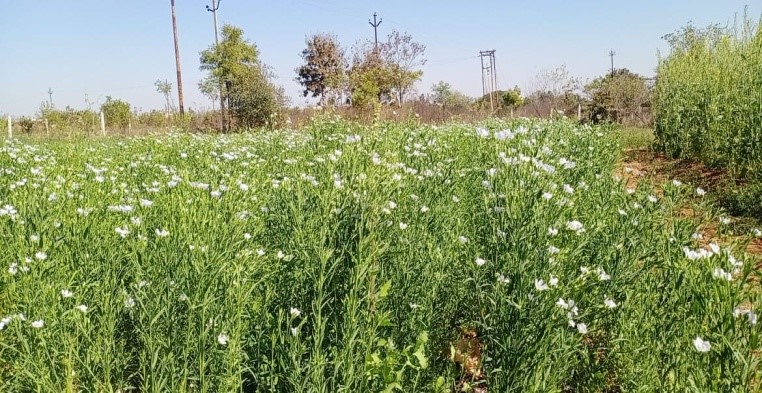
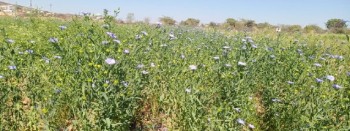
Effect of different verities field demonstration of Linseed crop.
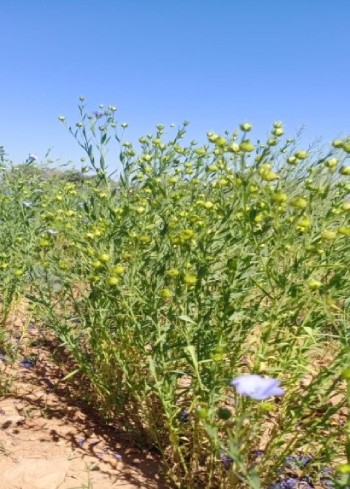
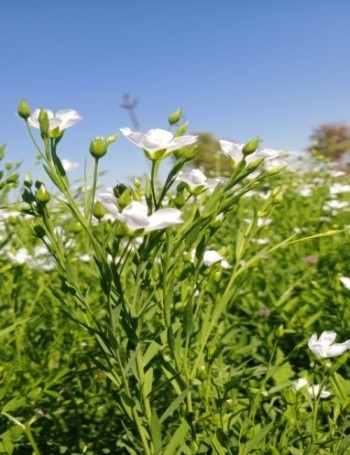
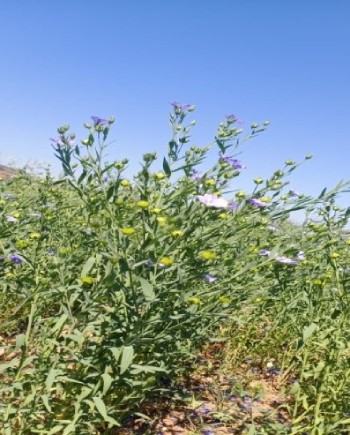
Flowering and fruiting stage of different varieties of linseed crop.

